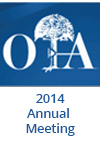
OTA 2014: Hinged vs no knee bracing after tibial plateau fractures yield similar results

OTA 2014: Hinged vs no knee bracing after tibial plateau fractures yield similar results
Comparing Outcomes Between Hinged Knee Bracing and No Bracing After Open Reduction and Internal Fixation of Tibial Plateau Fractures
CONFERENCE ACE REPORTS
This ACE Report is a summary of a conference presentation or abstract. The information provided has limited the ability to provide an accurate assessment of the risk of bias or the overall quality. Please interpret the results with caution as trials may be in progress and select results may have been presented.
Synopsis
49 patients who underwent open reduction and internal fixation of tibial plateau fracture were randomly allocated to receive or not receive a hinged knee brace after surgery. Those allocated the brace usage wore the brace for 6 weeks postoperatively. The purpose of this trial was to compare radiographic, functional, and subjective outcomes between groups. No-brace patients achieved similar union, ...
To view the full content, login to your account,
or start your 30-day FREE Trial today.
FREE TRIAL
LOGIN
Forgot Password?
Explore some of our unlocked ACE Reports below!

Learn about our AI Driven
High Impact Search Feature
Our AI driven High Impact metric calculates the impact an article will have by considering both the publishing journal and the content of the article itself. Built using the latest advances in natural language processing, OE High Impact predicts an article’s future number of citations better than impact factor alone.
Continue



 LOGIN
LOGIN

Join the Conversation
Please Login or Join to leave comments.